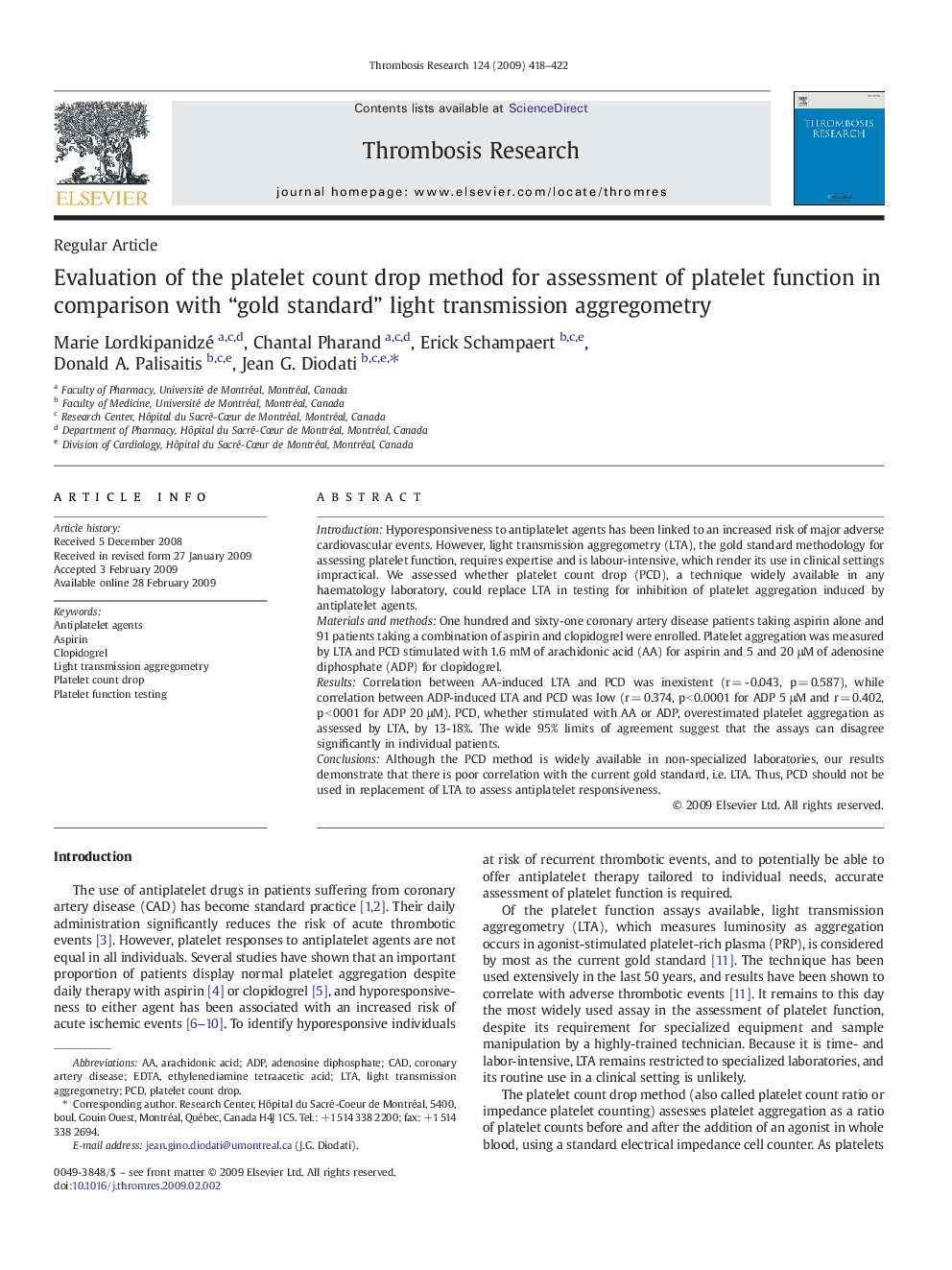| Article ID | Journal | Published Year | Pages | File Type |
|---|---|---|---|---|
| 3029587 | Thrombosis Research | 2009 | 5 Pages |
IntroductionHyporesponsiveness to antiplatelet agents has been linked to an increased risk of major adverse cardiovascular events. However, light transmission aggregometry (LTA), the gold standard methodology for assessing platelet function, requires expertise and is labour-intensive, which render its use in clinical settings impractical. We assessed whether platelet count drop (PCD), a technique widely available in any haematology laboratory, could replace LTA in testing for inhibition of platelet aggregation induced by antiplatelet agents.Materials and methodsOne hundred and sixty-one coronary artery disease patients taking aspirin alone and 91 patients taking a combination of aspirin and clopidogrel were enrolled. Platelet aggregation was measured by LTA and PCD stimulated with 1.6 mM of arachidonic acid (AA) for aspirin and 5 and 20 μM of adenosine diphosphate (ADP) for clopidogrel.ResultsCorrelation between AA-induced LTA and PCD was inexistent (r = - 0.043, p = 0.587), while correlation between ADP-induced LTA and PCD was low (r = 0.374, p < 0.0001 for ADP 5 μM and r = 0.402, p < 0001 for ADP 20 μM). PCD, whether stimulated with AA or ADP, overestimated platelet aggregation as assessed by LTA, by 13-18%. The wide 95% limits of agreement suggest that the assays can disagree significantly in individual patients.ConclusionsAlthough the PCD method is widely available in non-specialized laboratories, our results demonstrate that there is poor correlation with the current gold standard, i.e. LTA. Thus, PCD should not be used in replacement of LTA to assess antiplatelet responsiveness.
